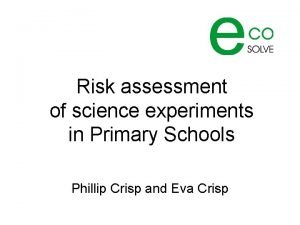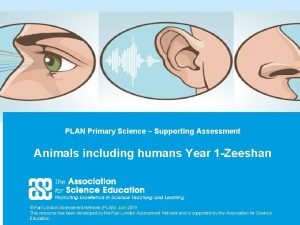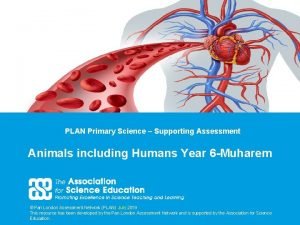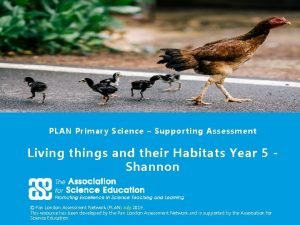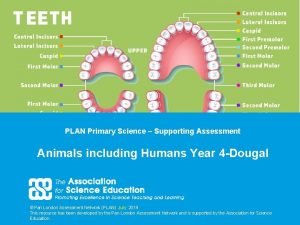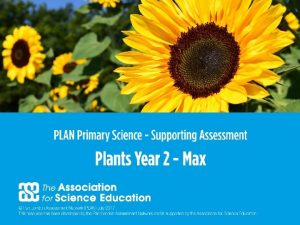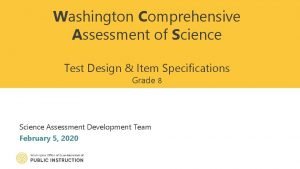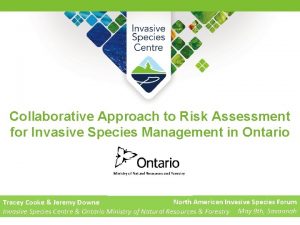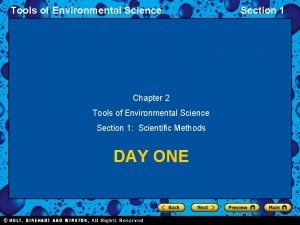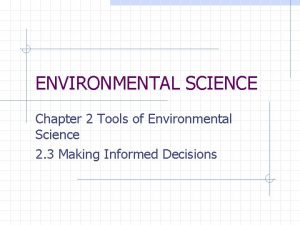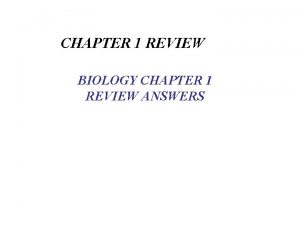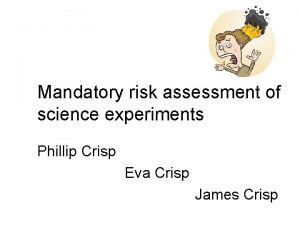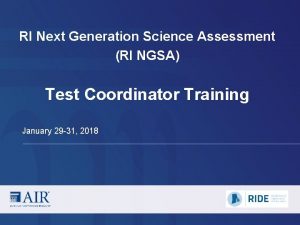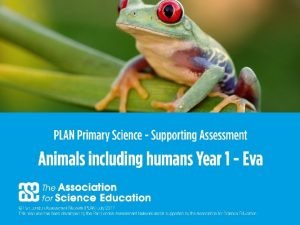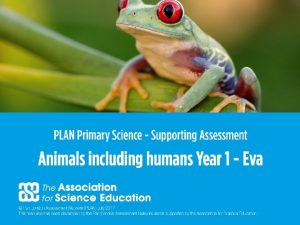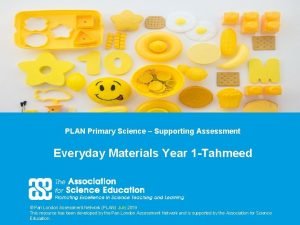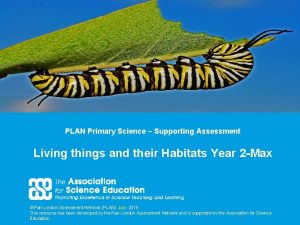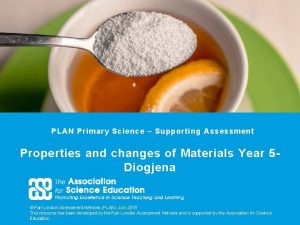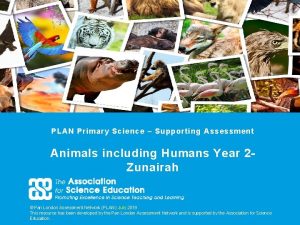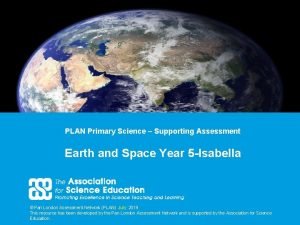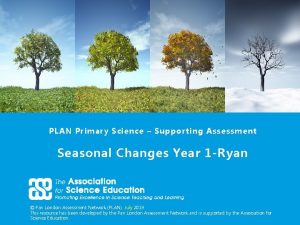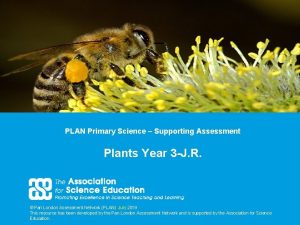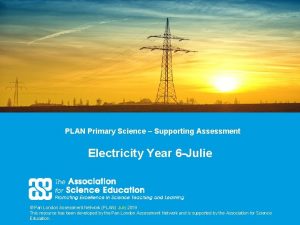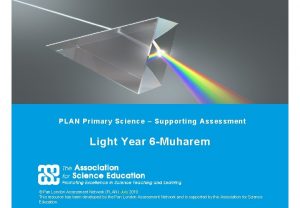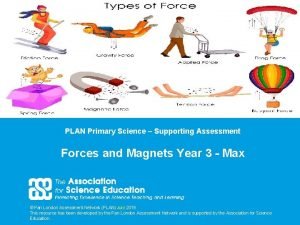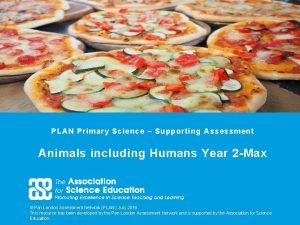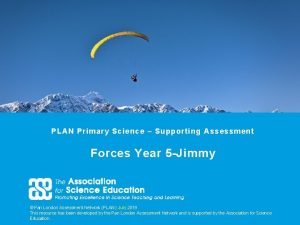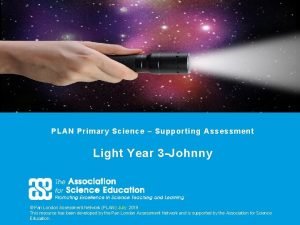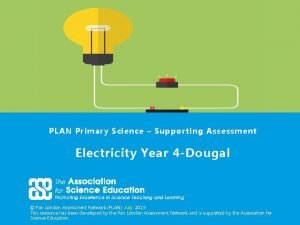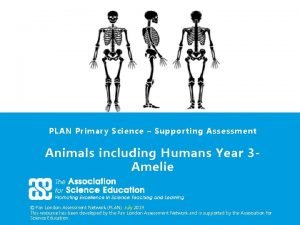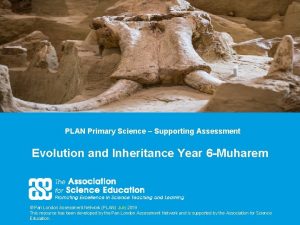1 PLAN Primary Science Supporting Assessment PLAN Primary
























- Slides: 24

1

PLAN Primary Science - Supporting Assessment PLAN Primary Science is a set of resources produced to enable teachers to have a clearer understanding of National Curriculum expectations for meeting the standard. Annotated collections of children’s work provide examples of what working at the expected standard for primary science might look like for the knowledge and conceptual understanding statements of the programmes of study (POS). It is not the intention of these resources to specifically exemplify the working scientifically statements. However, aspects of working scientifically have been shown as an integral part of the teaching and learning of the knowledge and concepts. The resources provided have been cross moderated multiple times before publishing so that they can be used with confidence by teachers and subject leaders. Each collection of work shows one example of how a pupil has met National Curriculum statements for a particular area of content but these are not intended to be the definitive way of teaching these statements. 2

Structure of the resources Each resource contains the relevant National Curriculum statements for the unit of work and prior learning, a planning matrix, annotated work and a summary sheet. The matrix provides an interpretation of the key learning of the National Curriculum statements, and suggestions of key vocabulary. In order to be meet the expectations pupils must firstly understand the key concept and then be provided with opportunities to apply that knowledge. This is a key planning tool. Key Learning Secure Possible Evidence Show Overview paragraph describing understanding of a curriculum concept by using scientific Key vocabulary – list of words vocabulary correctly Possible ways to demonstrate key learning, particularly correct usage of vocabulary Apply knowledge Suggestions of contexts to use. in familiar related contexts, including a range of enquiries Possible ways to demonstrate that a pupil has gone beyond recall of facts and can apply the key learning, for example using the vocabulary and basic principles to produce explanations, usually within Working Scientifically contexts. 3

Contents of the materials Please note: The NC statements for each topic area for the relevant year group are stated on the slide. Only the statements in bold on that slide have been exemplified. In these cases the teachers have chosen to split the statements within the topic area to teach at different times. The prior NC statements relevant to the topic area are also stated and use to determine pupils’ knowledge at the start of the unit. Each slide has been annotated with coloured text. Please see key below: Red Commentary to explain how evidence meets/does not meet NC statements Blue Commentary to highlight features of working scientifically Green Pupil Speak Grey Other relevant information eg. vocabulary used 4

Year 1 Statements Learning Prior Learning Year– Prior 1 statements Pupils should be taught to: • identify and name a variety of common wild and garden plants, including deciduous and evergreen trees • identify and describe the basic structure of a variety of common flowering plants, including trees 5

Year 2 Statements Year 2 statements Pupils should be taught to: • observe and describe how seeds and bulbs grow into mature plants • find out and describe how plants need water, light and a suitable temperature to grow and stay healthy 6

Later Statements Pupils do not need to be taught content they will learn in later year groups. They can be challenged by applying the content for their year group in broader contexts. In Year 3 pupils will be taught to: • identify and describe the functions of different parts of flowering plants: roots, stem/trunk, leaves and flowers • explore the requirements of plants for life and growth (air, light, water, nutrients from soil, and room to grow) and how they vary from plant to plant • investigate the way in which water is transported within plants • explore the part that flowers play in the life cycle of flowering plants, including pollination, seed formation and seed dispersal.

SECURE Assessment guidance Key learning Possible Evidence Shows understanding of a concept using scientific vocabulary correctly Plants may grow from either seeds or bulbs. These then germinate and grow into seedlings which then continue to grow into mature plants. These mature plants may have flowers which then develop into seeds, berries, fruits etc. Seeds and bulbs need to be planted outside at particular times of the year and they will germinate and grow at different rates. Some plants are better suited to growing in full sun and some grow better in partial or full shade. Plants also need different amounts of water and space to grow well and stay healthy. Key vocabulary As for year 1 plus - light, shade, sun, warm, cool, water, grow, healthy Can describe how plants that they have grown from seeds and bulbs have developed over time Can identify plants that grew well in different conditions Applying knowledge in familiar related contexts, including a range of enquiries Make close observations of seeds and bulbs Classify seeds and bulbs Research and plan when and how to plant a range of seeds and bulbs Look after the plants as they grow – weeding, thinning, watering etc. Make close observations and measurements of their plants growing from seeds and bulbs Make comparisons between plants as they grow Can spot similarities and difference between bulbs and seeds Can nurture seeds and bulbs into mature plants identifying the different requirements of different plants

Initial assessment activity to check on prior learning (contd. ) • identify and describe the basic structure of a variety of common flowering plants, including trees The children were given a selection of seeds and bulbs on their table and asked to have a look at them and talk about what they noticed. They were not told what they were. This one looks like popcorn. The seeds are like plants growing up. These are bulbs. They go together because they look alike. The children were then asked to think about how they could sort the objects. Max’s group first sort them into seeds, bulbs and beans. They then sorted by size. We could sort them by colour or texture, whether they are rough or smooth. They also sorted them in order from cleanest to dirtiest. Max suggests different ways to sort the seeds and bulbs and also ranks them in order. Max is aware that plants grow from seeds and is familiar with bulbs.

Initial assessment activity to check on prior learning (contd. ) • identify and describe the basic structure of a variety of common flowering plants, including trees Following on from the classification activity they were asked to complete the grid to show what they already knew about plants and questions that they had. Max knows the parts of a plant covered in year 1 and is aware of what plants need to grow. The children were asked what seeds need to start growing. manure Includes light as a need for a seed to start growing Max is not aware that seeds do not need the same conditions to start to grow as plants require.

Making close observations of seeds and bulbs • observe and describe how seeds and bulbs grow into mature plants The children were asked to make careful observational drawings of seeds and bulbs The bulbs already have shoots, whereas the seeds do not. Max used a magnifying glass to help him make close observations.

Odd one out activity • observe and describe how seeds and bulbs grow into mature plants The children were shown images of a sunflower seed, sunflower seedlings and an amaryllis bulb and asked to think about which was the odd one out. The seed is the odd one out because it is not growing. You can already see the shoot coming out of the bulb. The seeds look like hats on the seedlings. Max notices the green shoot already coming out of the bulb. He also notices that the seed case has been pushed out of the ground by the seedling.

Planting bulbs • observe and describe how seeds and bulbs grow into mature plants • find out and describe how plants need water, light and a suitable temperature to grow and stay healthy The children planted an amaryllis bulb. Over the next month they kept an eye on it, looking for how it changed and measuring it. It grew really quickly. It now has three flowers. The petals are pinkish white. It smells a little bit. It needed a lot of water because it is hot in our classroom. Max comments on the flower, how the plant grew and how it needed to be looked after.

Discussing a concept cartoon • observe and describe how seeds and bulbs grow into mature plants • find out and describe how plants need water, light and a suitable temperature to grow and stay healthy The children discussed the ideas on the concept cartoon. They will not start to grow in the dark as they need sunlight. They will start to grow better under a bright light. Max does not realise that seeds and bulbs do not need light to start to grow.

Observing seeds germinating in the dark • observe and describe how seeds and bulbs grow into mature plants • find out and describe how plants need water, light and a suitable temperature to grow and stay healthy Some sunflower seeds were planted and then kept in the cupboard. Max was surprised that the seeds started to grow in the cupboard The seeds in the cupboard started to grow at the same time as the ones by the window, but they grew faster. The leaves were yellow though. I don’t think they are very healthy. The plants are more healthy if they have light. Max now knows that seeds can start to grow in the dark, but that to grow healthily the seedlings need light.

Observing seeds germinating in the cold and warmth • observe and describe how seeds and bulbs grow into mature plants • find out and describe how plants need water, light and a suitable temperature to grow and stay healthy Cotyledons – Max picked up this word from a book the class were reading together After 3 weeks our seed with heat has started to grow. Our seedling is 7 cm. Our seed in the fridge has not started to grow at all. Some seeds were also put in the fridge. Max makes careful observations of the seeding and produces a labelled diagram of the basic parts including root hairs which he read about in a book. Max has observed that seeds need warmth to germinate.

Reflection on observing seeds germinating in different conditions • observe and describe how seeds and bulbs grow into mature plants • find out and describe how plants need water, light and a suitable temperature to grow and stay healthy The children were asked to reflect on what they had learnt by trying to germinate the seeds in different conditions. Max recognises that seeds grown indoors need to be looked after. Max now shows that he understands that seeds do not need light to germinate.

Reflection on observing seeds growing in different conditions • observe and describe how seeds and bulbs grow into mature plants • find out and describe how plants need water, light and a suitable temperature to grow and stay healthy The children continued to observe the seedling growing in different conditions. Max shows that he understands that plants need different conditions to germinate and grow healthily.

Reflection on observing seeds growing in different conditions • observe and describe how seeds and bulbs grow into mature plants • find out and describe how plants need water, light and a suitable temperature to grow and stay healthy The children planted sunflower seeds in pots which were then taken outside once they germinated. This one is taller and more eaten by caterpillars. They both have one main stem and smaller stems coming off it. Each smaller stem has a maximum of one leaf. The smaller sunflower has got flowers growing. I can see four buds. The smaller one has had more light and is healthier and it is going to have flowers. The other one is taller but I don’t think it is going to flower. Max continues to demonstrate his understanding that the amount of light affects how healthy a plant is and how it grows.

Growing a range of seeds • observe and describe how seeds and bulbs grow into mature plants • find out and describe how plants need water, light and a suitable temperature to grow and stay healthy As part of a 'Shelf life' project every child brought in an item of food packaging from a list and grew the plant that provides us with the given food. The children looked after their own plants, watering them and giving them plenty of light and they took photographs of their progress. Max grew a potato plant. Max takes measurements of his potato plant. He chose to measure its height using a ruler. He took it home to replant into a bigger pot. Later in the year the teacher asked him about his potato plant. It was like a little potato when I planted it. Mine was one of the smallest growers. I didn’t put it in a bigger pot at home. I kept watering it but it died. There wasn’t enough room for the roots. Max understands that the plant needs water and the roots need sufficient space for the plant to grow healthily.

Growing a range of bulbs • observe and describe how seeds and bulbs grow into mature plants • find out and describe how plants need water, light and a suitable temperature to grow and stay healthy The children were given a selection of summer bulbs to plant in pots. Max chose to plant some upside down to see if that would make a difference. Another group chose to plant some behind the shed to see if they would grow. I don’t think it will grow if it is planted upside down. I think it may grow if it is behind the shed as it doesn’t need light to start to grow, but it might not grow well. It might be tall and yellow. Max makes a prediction based on his previous observations of the seeds put in the cupboard. Whilst planting some seeds later, some of the bulbs were accidentally dug up. The children noticed a difference between the ones that were planted upside down. The stem went into the ground and then came back up again.

Growing a range of herbs from seeds • observe and describe how seeds and bulbs grow into mature plants • find out and describe how plants need water, light and a suitable temperature to grow and stay healthy The children also planted some herb and wildflower seeds in pots in the playground. The children had handled, smelt and tasted herbs in year 1 as part of their senses topic. None of the herb seeds have grown. How do you know that? Because none of these leaves smell like herbs. Through observation Max identifies that the herb seeds have not grown.

Overall Summary - Secure Max has made close observations of seeds and bulbs and can talk about them. He now knows from direct observation that seeds and bulbs do not need light to germinate but they do need some warmth. He has also observed how seedlings grow differently according to the light level. Through the year he has observed a range of seeds and plants growing to maturity although he is also aware that not all the seeds and bulbs that were planted had the right conditions to be healthy and survive. .

Acknowledgements
 My favorite subject is english and math
My favorite subject is english and math Science risk assessment primary school
Science risk assessment primary school Primary and supporting instruments
Primary and supporting instruments Primary and supporting instruments ifr
Primary and supporting instruments ifr Plan primary science
Plan primary science Plan primary science
Plan primary science Plan primary science
Plan primary science Digestive parts
Digestive parts Plan primary science
Plan primary science Product principle in portfolio assessment
Product principle in portfolio assessment Define dynamic assessment
Define dynamic assessment Portfolio assessment matches assessment to teaching
Portfolio assessment matches assessment to teaching Washington comprehensive assessment program
Washington comprehensive assessment program Risk response
Risk response Environmental science section 2 review answers
Environmental science section 2 review answers Chapter 2 assessment environmental science
Chapter 2 assessment environmental science The central science 14th edition
The central science 14th edition Biology chapter 1 assessment answers
Biology chapter 1 assessment answers Phillip crisp
Phillip crisp Ngss assessment portal
Ngss assessment portal Middle school classes
Middle school classes Natural vs social science
Natural vs social science Natural science vs physical science
Natural science vs physical science Natural and physical science
Natural and physical science Applied science vs pure science
Applied science vs pure science

